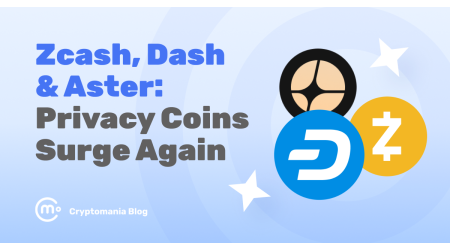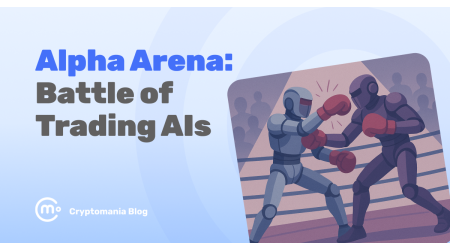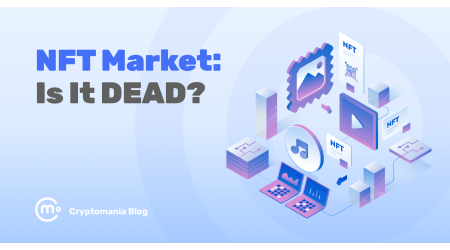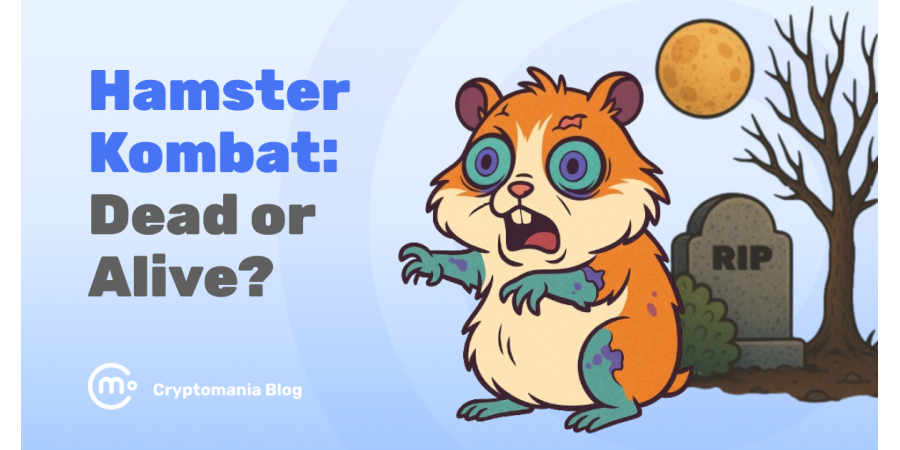
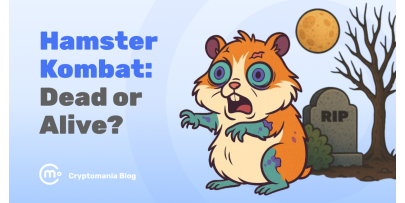
Remember how everyone around was tapping hamsters on their phones like their lives depended on it? As expected, the hype has subsided, and people have gotten new shiny toys to play with, like Labubus, iPhone 17, or whatever.
Hamster Kombat went from being Telegram’s biggest craze to just another fidget spinner in record time.
But the story isn’t over. The game is still running, the token exists, and airdrops happened — just not in the way most people hoped. The bigger question now is whether Hamster Kombat has a future or if it’s destined to be remembered as one more flash-in-the-pan crypto fad.
Hamster Kombat: The days of glory
Hamster Kombat didn’t just pop up — it exploded. Launched in spring 2024, it grew rapidly into Telegram’s biggest hit, pulling in tens of millions of users in just a few weeks. By summer, it was competing with Notcoin for the crown of “fastest-growing game ever” on the platform.
Part of the magic was how simple it was. Tap the hamster on your phone screen, earn coins, level up your “CEO hamster empire,” and brag about your progress on social media.
For a full breakdown of Hamster Kombat’s structure, tokenomics, and roadmap, we’ve got a dedicated article that dives deeper.
Also, add in the referral mechanics, daily tasks, and community-driven hype, and suddenly you have everyone from crypto traders to casual Telegram users hooked.
After rolling out its token, $HMSTR, the game pulled in more than 239 million players. The numbers were so massive that even Telegram’s founder, Pavel Durov, gave it a nod of approval on his channel.
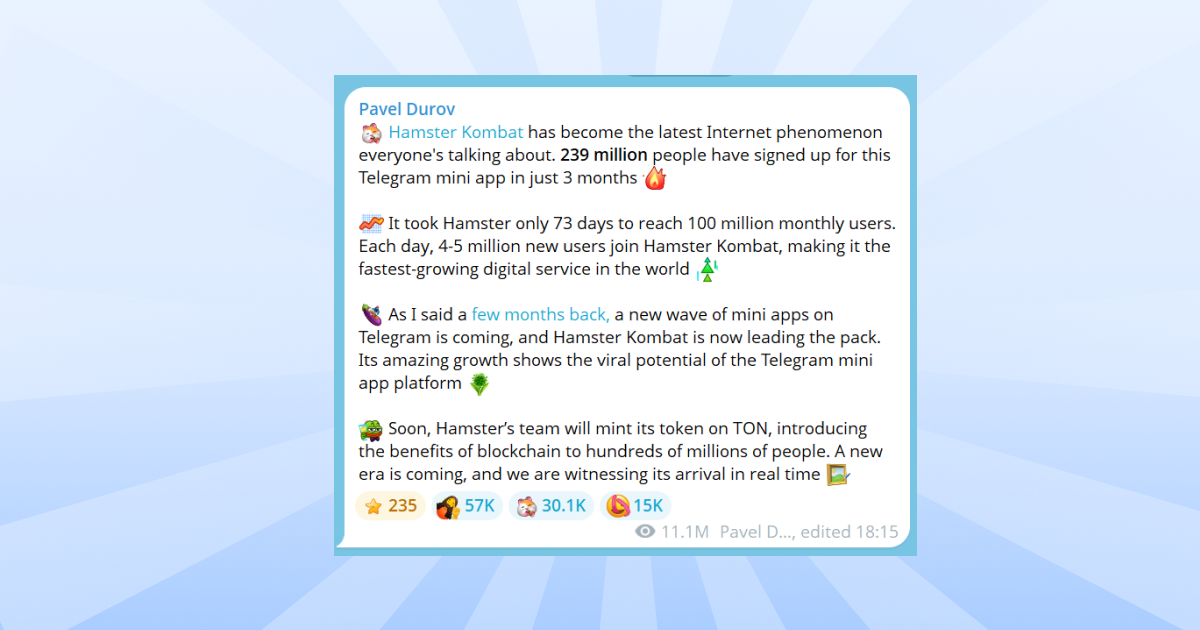
That shoutout was the ultimate rocket fuel. Within weeks, the player count exploded past 300 million by the end of September.
At its peak, Hamster Kombat wasn’t just a game — it was a cultural moment. Twitter feeds, Telegram groups, and even mainstream news picked it up. Memes flew nonstop, and for a short while, tapping a digital hamster felt like a ticket to free money once the token dropped.
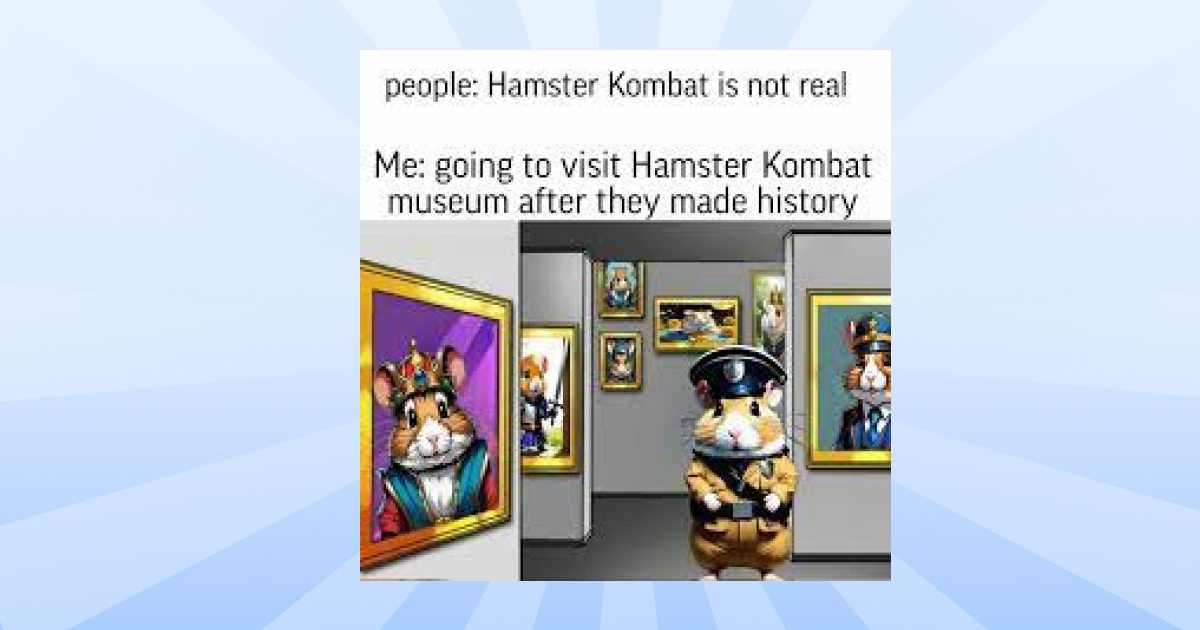
The token promise & airdrops
The whole point of Hamster Kombat’s grind was the token. After months of tapping, the devs rolled out $HMSTR on September 26, 2024. It was one of the biggest airdrops in crypto history.
The developers built anticipation around the first airdrop, framing it as the payoff for months of grinding.
The pitch was simple but powerful:
- A massive airdrop event tied to the launch of the $HMSTR token on TON.
- Billions of tokens set aside specifically for loyal players.
- Exchange listings on major platforms like OKX, giving the token instant liquidity and, in theory, value.
Players imagined serious rewards. Social media was full of speculation about how much $HMSTR could be worth, with many hoping the airdrop would be the next “life-changing” crypto moment.
The narrative was clear: the bigger your pile of in-game coins, the bigger your slice of the drop.
The fall: Where things went wrong
But after the first round of airdrops, reality bit back. Half the community didn’t qualify, the vesting schedule annoyed grinders, and the token price didn’t live up to sky-high expectations.
- 131M players qualified out of 300M+, with 2.3M banned for cheating.
- 60B tokens allocated for Season 1, about 89% claimable immediately, the rest locked until mid-2025.
- Listed on Binance, OKX, Bitfinex, and other top exchanges on day one.
For many players, months of tapping ended in disappointment. $HMSTR started trading at just $0.01, and with average allocations of around 600 tokens per player, that worked out to a mere $6.
Not exactly the life-changing payday people were grinding for.
At its peak in August 2024, Hamster Kombat bragged about a 300-million-strong user base. Fast forward a few months, and the picture looks very different: the game has reportedly shed 259 million players, leaving just under 41 million active monthly users today.
The token didn’t fare much better. $HMSTR launched at $0.009993 on September 26, but it has since slid by about 76%, trading around $0.002392.
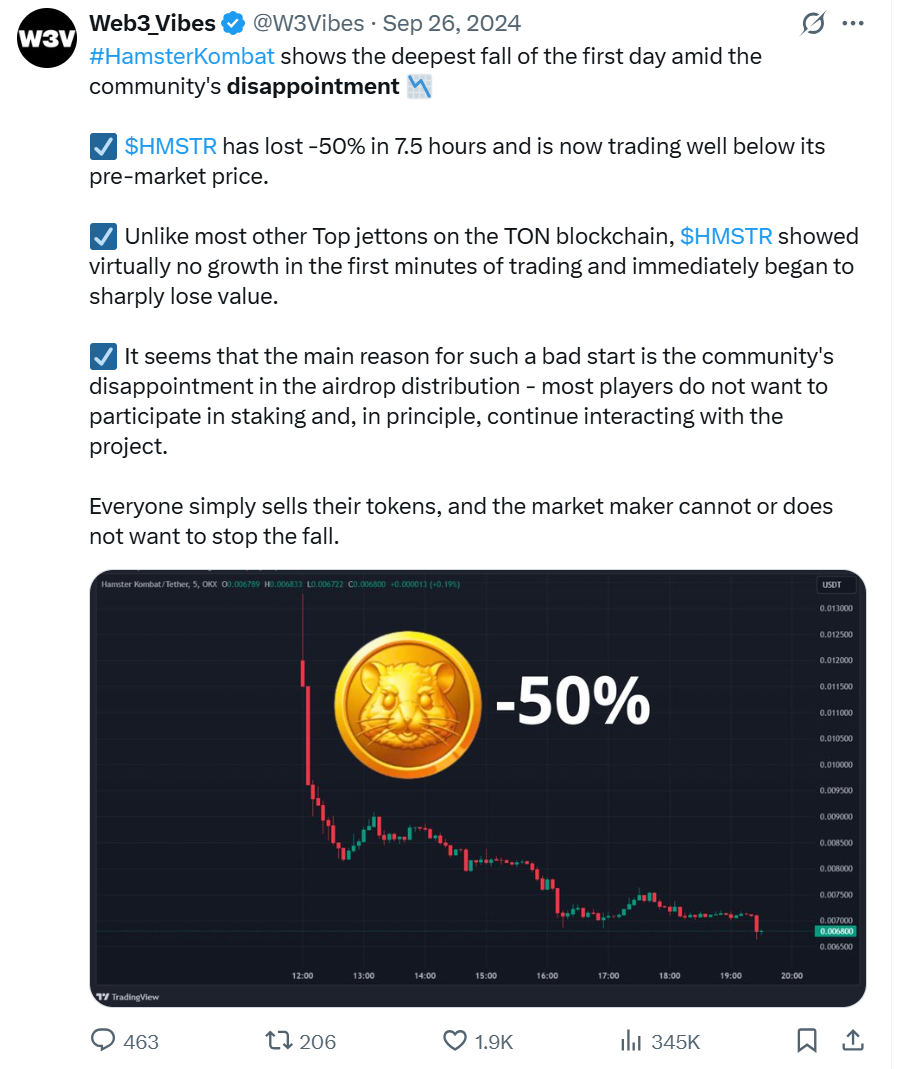
The numbers alone would be enough to cool off the hype, but the community’s frustration made things worse. Dissatisfied players accused the developers of manipulating token allocations and running the project unethically.
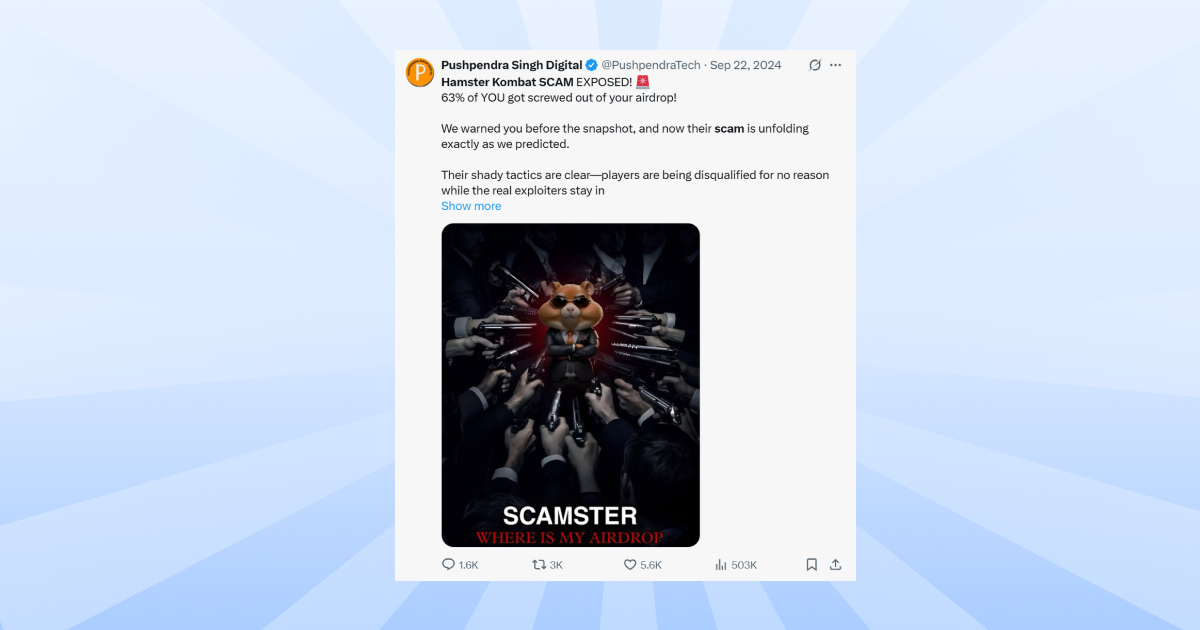
Players also accused the team of pandering to YouTubers and influencers for referrals, while regular players got scraps and wrongful bans.
Hamster Kombat 2025: Current situation
Hamster Kombat is still alive and kicking, although on a much more humble scale. Engagement has dropped massively compared to the peak, but the team continues to sluggishly ship updates and push the project forward. Or, at the very least, create an illusion of movement.
In November 2024, the devs proudly announced 11 million $HMSTR on-chain holders. On paper, that number sounds huge, but in context, it’s less impressive. With over 300 million people having played the game and the token price stuck under a penny, the milestone looks more like a retention stat than a sign of explosive growth. A large number of wallets doesn’t automatically mean an active or valuable community, especially when the token itself has lost most of its shine.
In December 2024, the project rolled out two big announcements:
- DAO governance: $HMSTR holders were given the ability to participate in votes to “define the future of the project.” In practice, it’s still limited in scope, but it was presented as a step toward decentralization.
- Hamsterverse: a broader entertainment ecosystem built around the game’s characters and storytelling. The idea was that all Hamsterverse games would integrate $HMSTR as the native currency. A closed beta for the first experiences launched shortly after.
Then, in February 2025, Hamster Kombat expanded further by launching the Hamster Network, a gaming-focused Layer-2 blockchain built on TON. The network came with its own wallet, a canonical bridge, and a dedicated DEX — the full starter kit for a self-sustaining ecosystem.
And yet, despite the noise, not much has happened since. The updates haven’t translated into a rebound in user activity or token value. As of now, $HMSTR trades at just $0.0007406, showing no signs of recovery for months.
The token’s utility is mostly limited to in-game items, skins, and upgrades — hardly the kind of demand driver that can pull it out of its slump.
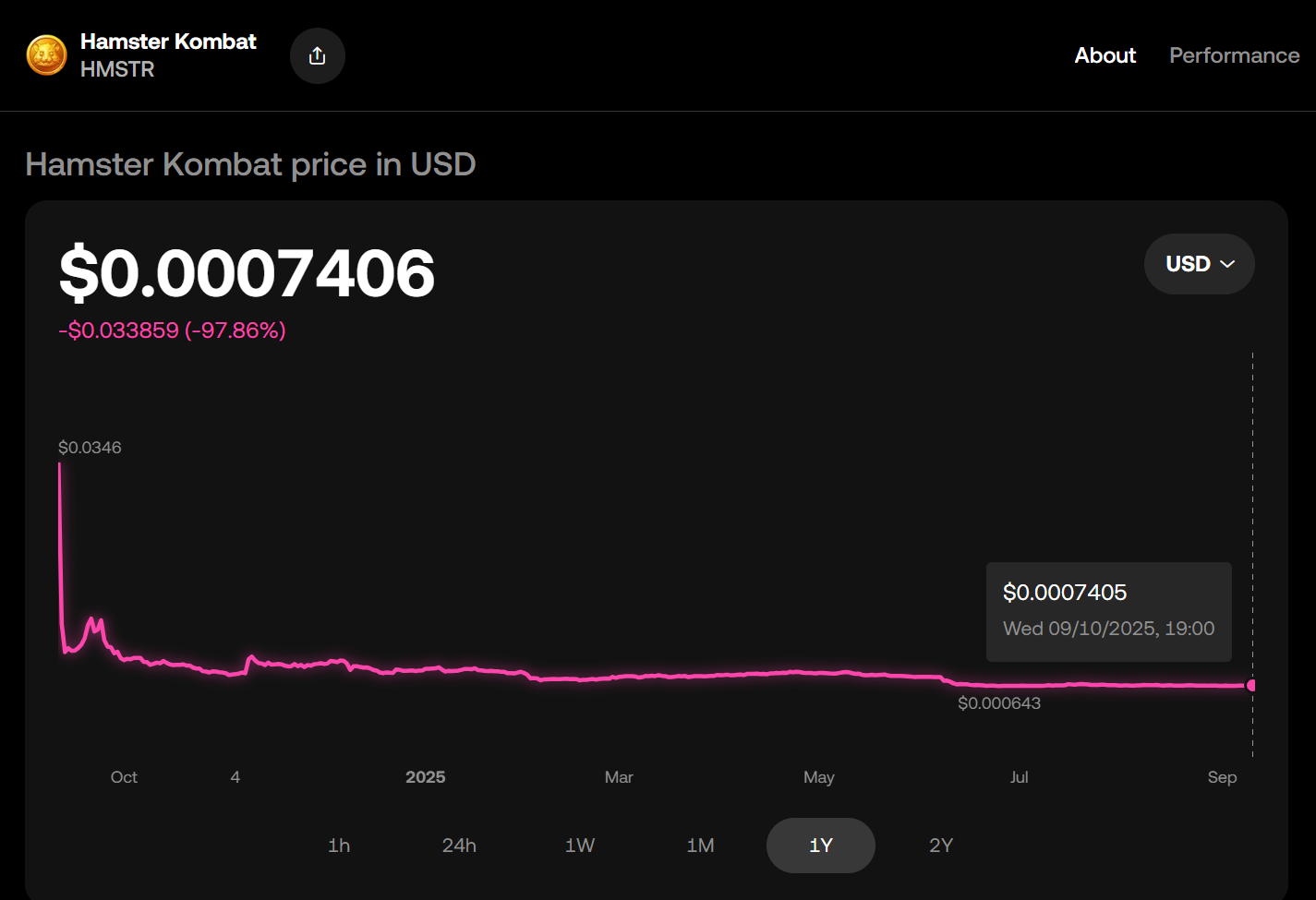
Aftermath & key takeaways
Hamster Kombat is a textbook case of how sheer hype without real value or utility eventually hits a roadblock. And it’s not the only case. Plenty of play-to-earn games follow the same cycle: explosive growth, sky-high promises, and then a steep drop once the rewards stop matching the hype.
There are a few clear lessons here:
- Hype can’t replace utility. Viral mechanics might pull in millions, but without lasting gameplay or token use, people lose interest fast.
- Airdrops aren’t magic. Even record-breaking distributions can feel empty if allocations are small, rules aren’t clear, or prices collapse.
- Community trust is a powerful force. Wrongful bans, influencer-first marketing, and opaque decisions erode the loyalty that made the game grow in the first place.
- Ecosystems need substance. A DAO, a “Hamsterverse,” even a Layer-2 chain mean little if players don’t see real benefits or reasons to stick around.
Today, it’s unclear whether the devs are pulling back from the project or if only a small team is left to maintain it.
Season 2 of the airdrop was scheduled to end on March 26, 2025, but with no official announcement and the roadmap now stretching into mid-2025, the project looks stalled.


